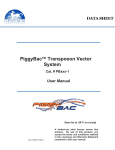Download SparQ User Manual V0.7 - SFB/TR8
Transcript
SFB/TR 8 Spatial Cognition - Project R3-[Q-Shape] SparQ User Manual V0.7 Jan Oliver Wallgrün Lutz Frommberger Frank Dylla Diedrich Wolter December 7, 2007 Contents 1. Installing SparQ 1.1. Requirements . . . . . . . . . . . . . . . . . . . . . . . . . . . . . . . . . . 1.2. Building the Executable . . . . . . . . . . . . . . . . . . . . . . . . . . . . 6 6 6 2. Reasoning with Qualitative Spatial Relations 2.1. What is a Qualitative Spatial Calculus? . . . . . . . . . . . 2.2. Constraint Networks, Consistency, and Consistent Scenarios 2.3. Qualitative Constraint Calculi . . . . . . . . . . . . . . . . . 2.3.1. Operations . . . . . . . . . . . . . . . . . . . . . . . 2.3.2. Set-theoretic Operations . . . . . . . . . . . . . . . . 2.3.3. Operations that Change Perspective . . . . . . . . . 2.3.4. Operations that Integrate . . . . . . . . . . . . . . . 2.3.5. Weak vs. Strong Operations . . . . . . . . . . . . . . 2.4. Checking Consistency . . . . . . . . . . . . . . . . . . . . . . . . . . . . . . . . . . . . . . . . . . . . . . . . . . . . . . . . . . . . . . . . . . . . . . . . . . . . . . . . . . . . . . . . . . . . . 7 7 9 10 11 11 12 12 13 14 3. Using SparQ 3.1. Command Line Options . . . . . . . . . 3.2. General Syntax . . . . . . . . . . . . . . 3.2.1. Calculi Identifier . . . . . . . . . 3.2.2. Denoting Relations . . . . . . . . 3.2.3. Denoting Configurations . . . . . 3.3. Qualify . . . . . . . . . . . . . . . . . . 3.4. Compute-relation . . . . . . . . . . . . . 3.5. Constraint-reasoning . . . . . . . . . . . 3.6. Interfaces . . . . . . . . . . . . . . . . . 3.7. Interactive Mode . . . . . . . . . . . . . 3.8. Including SparQ Into own Applications 3.9. Adding new Calculi . . . . . . . . . . . . 3.9.1. Calculus Specification . . . . . . 3.9.2. Specification Reference . . . . . . 3.9.3. Operation Specification . . . . . . . . . . . . . . . . . . . . . . . . . . . . . . . . . . . . . . . . . . . . . . . . . . . . . . . . . . . . . . . . . . . . . . . . . . . . . . . . . . . . . . . . . . . . . . . . . . . . . . . . . . . . . . . . . . . . . . . . . . . . . 16 17 17 17 19 20 20 21 23 26 26 27 28 28 29 29 2 . . . . . . . . . . . . . . . . . . . . . . . . . . . . . . . . . . . . . . . . . . . . . . . . . . . . . . . . . . . . . . . . . . . . . . . . . . . . . . . . . . . . . . . . . . . . . . . . . . . . . . . . . . . . . . . . . . . . . . . . . . . . . . . . . . . . . . . . . . . . . . . . . . . . . . . . . . . . . . . . . . . . . Contents 4. Internals 35 4.1. Implementation Details . . . . . . . . . . . . . . . . . . . . . . . . . . . . 35 4.2. Outlook — Planned Extensions . . . . . . . . . . . . . . . . . . . . . . . . 35 A. Implemented Calculi A.1. Allen’s Interval Algebra (IA) . . . . . . . . . . . . . . . . . . . . . A.2. Cardinal Direction Calculus . . . . . . . . . . . . . . . . . . . . . . A.3. Dependency Calculus . . . . . . . . . . . . . . . . . . . . . . . . . . A.4. Dipole Calculus Family . . . . . . . . . . . . . . . . . . . . . . . . A.5. Doublecross Calculus (DCC) . . . . . . . . . . . . . . . . . . . . . A.6. FlipFlop Calculus With LR Refinement . . . . . . . . . . . . . . . A.7. The Geometric Orientation (Alignment) Calculus . . . . . . . . . . A.8. Oriented Point Reasoning Algebra With Granularity m (OPRAm ) A.9. Point Calculus (Point Algebra) . . . . . . . . . . . . . . . . . . . . A.10.Qualitative Trajectory Calculus Family . . . . . . . . . . . . . . . . A.11.The Region Connection Calculus family (RCC) . . . . . . . . . . . A.12.Singlecross Calculus (SCC) . . . . . . . . . . . . . . . . . . . . . . . . . . . . . . . . . . 40 41 42 43 44 46 48 49 50 52 53 58 60 B. Quick Reference B.1. Command Summary . . . . . . . . . . . . . . . . . . . . . . . . . . . . . . B.2. Interactive Mode . . . . . . . . . . . . . . . . . . . . . . . . . . . . . . . . B.3. List of Calculi . . . . . . . . . . . . . . . . . . . . . . . . . . . . . . . . . . 61 61 62 63 3 . . . . . . . . . . . . . . . . . . . . . . . . . . . . . . . . . . . . About SparQ... SparQ is a toolbox for representing space and reasoning about space based on qualitative spatial relations. It is developed within the R3-[Q-Shape] project of the SFB/TR 8 Spatial Cognition funded by the Deutsche Forschungsgemeinschaft (DFG). SparQ is based on results from the qualitative spatial reasoning (QSR) community which consists of researchers from a various disciplines including computer science, artificial intelligence, geography, philosophy, psychology, and linguistics. During the last two decades, a multitude of formal calculi over sets of spatial relations (like ‘overlaps’, ‘left-of’, ‘north-of’) have been proposed, focusing on different aspects of space (mereotopology, orientation, distance, etc.) and dealing with different kinds of objects (points, line segments, extended objects, etc.). SparQ aims at making these qualitative spatial calculi and the developed reasoning techniques available in a single homogeneous framework that is released under the GPL license for freely available software and can easily be included into applications. Our aim is providing a common toolbox spanning across all techniques of qualitative reasoning, thereby providing a universal toolbox to the user. Currently, we provide techniques for mapping the continuos domain to qualitative representations manipulating symbolical propositions checking consistency of qualitative information interfacing with other reasoning tools SparQ is designed for the application designer or researcher working in a field other than qualitative reasoning, offering access to reasoning techniques in an easy-to-use manner. If you are new to qualitative spatial reasoning, see the following chapter for an introduction to this field and the services it can offer to your field. SparQ is also designed for the researcher working on qualitative spatial reasoning. It provides an implementation toolbox of key techniques in QSR, making experimental analysis easier. Furthermore, SparQ offers an easy format to specify new calculi. This eases distribution of new calculi and enables researches to more easily compare different calculi, for example in an application context. In this manner SparQ is a community effort: it provides a rich repertoire of qualitative calculi to application designers. We would be happy to include your calculus! Last but not least, SparQ offers tools for analyzing QSR calculi, thereby supporting the calculus designer. 4 Contents This document provides answers to four topic areas: Installation of SparQ A brief introduction to the field of QSR Reference of SparQ commands and calculi specification syntax Description of provided calculi For an up-to-date list of supported calculi and the newest version of this manual, please visit our website (http://www.sfbtr8.uni-bremen.de/project/r3/sparq/). For questions or feedback, please send us an e-mail to the address below. We are always interested in suggestions for improvement and in hearing about your experience with SparQ. The R3-[Q-Shape] team [email protected] License SparQ is free software: you can redistribute it and/or modify it under the terms of the GNU General Public License as published by the Free Software Foundation, either version 3 of the License, or (at your option) any later version. This program is distributed in the hope that it will be useful, but WITHOUT ANY WARRANTY; without even the implied warranty of MERCHANTABILITY or FITNESS FOR A PARTICULAR PURPOSE. See the GNU General Public License for more details. A copy of the GNU General Public License is provided in the COPYING file distributed with SparQ. If you can’t access it, visit http://www.gnu.org/licenses/. As this software is being provided free of charge, warranty as stipulated in sections 11 and 12 shall be governed by the provisions of German civil law concerning gifts (Schenkungsrecht). 5 1. Installing SparQ SparQ is built using several standard tools available for a variety of operating systems. SparQ is written for POSIX systems. Its functionality is continuously tested on Linux, Solaris, and Mac OS X, but it should work on any Unix system. 1.1. Requirements SparQ is currently not available in binary versions. For installation some freely available standard tools are required. Besides its calculi specifications as plain text, SparQ comprises a set of C libraries and a main program written in Lisp. For compilation we rely on availability of these tools: Steel Bank Common Lisp (SBCL)1 , version 0.9.10 or higher gcc and g++, version 2.95 or higher GNU libtool, version 1.4.3 or higher2 LATEX for typesetting this manual 1.2. Building the Executable To build a running version of SparQ, unpack the source code package, enter the newly created SparQ directory (called sparq-<version>) and run $ ./configure followed by $ make The executable will be installed within the SparQ directory. Please note that you have to recompile SparQ if you move the directory to another place. If you encounter any problems during the build process, please contact the authors. 1 2 http://sbcl.sourceforge.net/ On Mac Os X a newer libtool version may be required, otherwise a manual patch may be necessary. See INSTALL notes for details. 6 2. Reasoning with Qualitative Spatial Relations In this section, we provide a brief introduction on qualitative spatial reasoning and explain the most important terms required when dealing with qualitative spatial calculi in SparQ. For more in-depth introductions to the field, we refer to Cohn and Hazarika (2001), Cohn (1997), Ladkin and Reinefeld (1992), Ladkin and Maddux (1994), Düntsch (2005), and the references provided for particular calculi in Appendix A. 2.1. What is a Qualitative Spatial Calculus? A qualitative calculus consists of a set of relations between objects from a certain domain and operations defined on these relations. Let us start with an easy example: the spatial version of the Point Algebra (PA) (Vilain et al., 1989). Imagine, we are being told about a boat race on a river by a friend on the phone1 . We can model the river as an oriented line and the boats of the 5 participants A,B,C,D,E as points moving along the line (see Fig. 2.1). Thus, our domain (the set of spatial objects considered) is the set of all 1D points. B A C E D A C/D B E Figure 2.1.: A possible situation in a boat race which can be modeled by 1D points on an oriented line and be described by qualitative relations from the Point Algebra. We now distinguish three relations between objects from our domain. A boat can be 1 This example has been borrowed from Ligozat (2005). 7 2. Reasoning with Qualitative Spatial Relations ahead of another boat, behind it, or on the same level. These relations can be used to formulate knowledge about the current situation in the race. For instance, our friend tells us the following: 1. A is behind B 2. E is ahead of B 3. A is behind C 4. D is on the same level as C 5. A is ahead of D From this information we are able to conclude that our friend must have made an error, probably confusing the names of the participants: We know that A is behind C (sentence 3) and D is behind A (conversion of sentence 5). From composing these two facts it follows that C and D cannot be on the same level which contradicts sentence 4. On the other hand, only taking the first three sentences into account, we can conclude that E is also ahead of A by composing the facts A is behind B (sentence 1) and B is behind E (conversion of sentence 2). However, this information is not sufficient to derive the exact relation between C and E, as C can either be ahead, behind or on the same level as E. The calculus, in this case the PA, defines a set of base relations (ahead, behind, and same) and provides the elementary reasoning steps in the form of operations defined over the base relations. In our small example, the applied operations were conversion, which given the operation between x and y returns the relation between y and x (thus the converse of ahead is behind ), and composition which takes the relations holding between X & Y and Y & Z and returns the relation holding between X & Z (e.g. composition of ahead and ahead is ahead ). Often the result of operations like the composition operation is not a single base relation but the union of more than one. For instance, knowing that X is ahead of Y and Y is behind Z yields the union of ahead, behind, and same. Because of this, the set of relations considered in a spatial calculus is not just the set of base relations, but the set of all unions of base relations including the empty set and the union of all base relations (the universal relation). All operations of the calculus are then defined for all unions of base relations: For example, we can apply conversion to the information that X is either ahead or at the same level as Y to infer that Y is either behind or at the same level as X. 8 2. Reasoning with Qualitative Spatial Relations 2.2. Constraint Networks, Consistency, and Consistent Scenarios A spatial configuration of a finite set of objects from the domain as given by sentences 1– 5 can be described as a constraint network as shown in Fig. 2.2. It consists of a variable for each object represented by the nodes of the network and edges labeled with relations from the considered calculus denoted as sets of base relations. For instance, sentence 1 is represented by the edge going from A to B labeled with {behind}. If no edge connects two nodes, this corresponds to an edge labeled with the universal relation U (the union of all base relations expressing complete ignorance), which is usually omitted. B {behind} A {behind} {ahead} C E {same} {ahead} D Figure 2.2.: The situation described by sentences 1–5 as a constraint network. As we have seen in our example, the information given in a constraint network can be inconsistent. This means, no objects from the domain can be assigned to the variables so that all the constraints given by the spatial relations annotated to the edges are satisfied. If, on the other hand, such an assignment can be found, the constraint network is said to be consistent or satisfiable or realizable. Determining whether a constraint network is consistent is a fundamental problem of qualitative spatial reasoning. Special techniques for determining consistency based on the operations of the calculus (especially the composition operations) have been developed. However, it is important to note that the soundness of these methods depends on the properties of the calculus at hand and are often still subject of ongoing investigations. For more details on this issue, we refer to Renz and Ligozat (2005) and the literature on individual calculi listed in Appendix A. A constraint network in which every constraint between two variables is a base relation is called atomic or a scenario. This means all spatial relations between two objects are completely determined with respect to the employed calculus and the remaining question is if the network is consistent or not. However, if a constraint network contains relations that are not base relations like in Fig. 2.3(a), we might also be interested in finding a 9 2. Reasoning with Qualitative Spatial Relations scenario that is a refinement of the original network (meaning it has been derived by removing individual base relations from the sets annotated to the edges) and that is consistent. Fig. 2.3(b) shows such a consistent scenario for the network in Fig. 2.3(a). If such a consistent scenario can be found, we also know that the original network is consistent. Otherwise, we know it is inconsistent. Of course, it is possible that more than one consistent scenario exists for a given constraint network and we might be interested in finding only one or all of these. An alternative consistent scenario is depicted in Fig. 2.3(c). C {behind} A C {behind} {ahead,behind} (a) B {behind} A C {behind} {ahead} (b) B {behind} A {behind} {behind} B (c) Figure 2.3.: A non-atomic constraint network (a) with possible consistent scenarios (b) and (c). The problems of determining consistency and finding consistent scenarios are subsumed under the term constraint-based reasoning throughout this text. 2.3. Qualitative Constraint Calculi After giving a rather intuitive introduction to qualitative spatial calculi, we want to give a more formal definition of a spatial calculus and especially the operations a calculus needs to define. Definition 1 (qualitative calculus, base relations, arity). A qualitative calculus < B, Dn > defines a finite, non-empty set B of n-ary qualitative base relations over some domain D, n i.e. B ⊆ 2D . We call n the arity of the calculus. For the purpose of constraint reasoning one usually requires that the set of base relations partitions Dn . Definition 2 (JEPD). A qualitative calculus < B, Dn > is called jointly exhaustive, if S n the base relations cover D , i.e. B∈B B = Dn . The calculus is called pairwise disjoint if no two base relations overlap, i.e. ∀B, B 0 ∈ B : B ∩ B 0 = ∅. Jointly exhaustive and pairwise disjoint calculi are commonly referred to as JEPD calculi. 10 2. Reasoning with Qualitative Spatial Relations In qualitative reasoning we consider a simple formal language that only allows relating (unqualified) objects by qualitative relations. Here, a infix notation is commonly used. For example, A r B stands for (A, B) ∈ r. Uncertainty can be modeled by using unions of base relations, e.g., to express that some objects may either stand in some relation r or s can be expressed by the relation r ∪ s, usually denoted {r, s}2 . Definition 3 (general relations). In a qualitative calculus < B, Dn > a general relation B = {Bi1 , Bi2 , . . . , Bim }, where Bi1 , Bi2 , . . . , Bi2 ∈ B represents the relation S j=1,2,...,n Bij obtained by uniting base relations. We will denote set of general relations obtained from a set of base relations B by RB .STwo special general relations are the empty relation ∅ and the universal relation U = B∈B B. In this context the JEPD property is important in two regards: 1. It offers a normal form of representing knowledge 2. The empty relation corresponds to unsatisfiability The latter is particular important for reasoning: the empty relation cannot be part of any consistent scene description. Thus, deriving that no relation other than the empty relation can hold between two objects, means that the scene description is contradictory. 2.3.1. Operations Let us now turn to the operations a calculus needs to define. There are three groups of operations: Set-theoretic operations on the level of general relations. Operations that represent a change of perspective Operations to integrate distinct propositions 2.3.2. Set-theoretic Operations The set-theoretic operations on the level of general relations can be defined independent of the calculus at hand. The following table lists the standard operations and their corresponding SparQ operation names (R and S stand for general relations): operation SparQ names definition union union R∪S ={x|x∈R∨x∈S } intersection intersection, isec R ∩ S = { x | x ∈ R ∧ x ∈ S } complement complement, cmpl R = U \ R = { x | x ∈ U ∧ x 6∈ R } 2 The notation using sets like {r, s} can be misleading as it syntactically identifies sets of relations with their unions. However, this notation is the established form. 11 2. Reasoning with Qualitative Spatial Relations 2.3.3. Operations that Change Perspective In the case of a binary (2-ary) calculus a change of perspective means that given we know the relation A r B, we can infer the relation r0 such that B r0 A. Definition 4 (converse). In a binary calculus < B, D2 > the unary converse operation ^ is defined as follows: r^ = {(A, B) | (A, B) ∈ D2 ∧ (B, A) ∈ r} Obviously, there are more ways to change perspectives in a general n-ary calculus for n > 2. Currently, only ternary (3-ary) calculi are also important to QSR. For ternary calculi 5 unary operations are commonly considered that are defined analogously to the converse in binary calculi. The following table gives a complete overview: operation SparQ names binary calculi: converse converse, cnv ternary calculi: inverse shortcut shortcut inverse homing homing inverse inv, inverse sc, shortcut sci, shortcuti hm, homing hmi, homingi effect B r^ A A rB A,B A,B A,B A,B A,B r r r r r C C C C C B,A A,C C,A B,C C,B inv(r) C sc(r) B sci(r) B hm(r) A hmi(r) A These operations may further be generalized for n-ary calculi. Given the unavailability of calculi with arities higher than 3, SparQ currently implements the operations for binary and ternary calculi only. 2.3.4. Operations that Integrate Admittingly the heading of this paragraph is misleading in that there is only one kind operation defined that integrates relations, the composition operations, most notably the binary composition ◦. Definition 5 (binary composition in binary calculi). In a binary calculus < B, D2 > the composition operation ◦ is defined as binary operator: r ◦ s := {(A, C) ∈ D2 | ∃B ∈ D : (A, B) ∈ r ∧ (B, C) ∈ s} Definition 6 (binary composition in ternary calculi). In a ternary calculus < B, D3 > the composition operation ◦ is defined as binary operator: r ◦ s := {(A, B, D) ∈ D3 | ∃C ∈ D : (A, B, C) ∈ r ∧ (B, C, D) ∈ s} 12 2. Reasoning with Qualitative Spatial Relations Other ways of composing two ternary relations can be expressed as a combination of the unary permutation operations and the composition (Scivos and Nebel, 2001) and thus do not have to be defined separately and are also not accessible individually in SparQ. Besides the definition of ternary composition employed in SparQ and by many others, for example Freksa (1992a), ternary composition has also been defined as ternary operator, more specifically a n-ary operator in an n-ary calculus Condotta et al. (2006). Definition 7 (n-ary composition). In a n-ary calculus < B, Dn > the n-ary composition operation • is defined as follows: •(r1 , r2 , . . . , rn ) := {(A1 A2 . . . An ) ∈ Dn | ∃B ∈ D : (A1 , A2 , . . . , An−1 , B) ∈ r1 ∧ (A1 , A2 , . . . , An−2 , B, An ) ∈ r2 ∧ . . . ∧ (B, A2 , A3 . . . , An ) ∈ rn } 2.3.5. Weak vs. Strong Operations By definition of the operations it is not clear that for example the converse of a qualitative (base) relation itself is a (base) relation too. In fact, this is not the case for some calculi. It may even be the case that no finite set of relations exists that describes the results of the operations. Take for example the aforementioned point calculus Vilain et al. (1989) . . . over the domain of natural numbers, i.e., < {<, =, >}, N2 >. Here, the composition . . < ◦ < stands for the relation “larger by at least 2” which cannot be described as a union of base relations provided by the point calculus. Extending the set of relation by . the respective relation—lets call it <1 —would only shift the problem since we would be . . facing a similar problem considering the composition <1 ◦ <. The framework of qualitative reasoning requires us to restrict ourselves to a finite set of relations, the general relations. So when we cannot express the true relations obtained by applying some operation we must use some form of approximation. An upper approximation of the true operation is utilized to accomplish this, i.e., an approximation that fully contains the true relation. Such upper approximations of operations are called weak operations as opposed to the true or strong operations. Figure 2.4 gives an illustration. In the case of the weak composition in a binary calculus < B, D2 > it is defined as: r ◦? s := {B ∈ B | B ∩ (r ◦ s) 6= ∅} Note that the use of an upper approximation of some operation still guarantees like in the case of strong operations that the empty relation can only be the result of contradicting information. However, the use of a weak operation can lead to situations in which a set of not agreeable statements is not detected as such. Given that from a syntactical point of view the difference between weak and strong operations is not identifiable, SparQ does not differentiate strong and weak operations syntactically. 13 2. Reasoning with Qualitative Spatial Relations D n partioned by base relations subset that cannot be described by base relations upper approximation using four base relations Figure 2.4.: Illustration of a relation, i.e., a subset of Dn , represented as an upper approximation 2.4. Checking Consistency Determining consistency of a constraint network in which the constraints are given as qualitative spatial relations from a particular calculus, is a particular instance of a constraint satisfaction problem (CSP). Unfortunately, the domains of our variables are typically infinite (e.g. the set of all points in the plane) and thus backtracking over all the values of the domain cannot be used to determine consistency. The techniques developed for relational constraint problems are instead based on weaker forms of consistency called local consistencies which can be tested or enforced based on the operations of the calculus and which are under particular conditions sufficient to decide consistency. One important form of local consistency is path-consistency which (in binary CSPs) means that for every triple of variables each consistent evaluation of the first two variables can be extended to the third variable in such a way that all constraints are satisfied. In the best case, path-consistency decides consistency for a given calculus. This means, that if we can make the network path-consistent by possibly removing some base relations from the constraints without ending up with the empty relation, we know that the original network is consistent. If this cannot be achieved, the network has to be inconsistent. Unfortunately, it is usually not the case that path-consistency decides consistency. However, sometimes path-consistency is sufficient to decide consistency at least for a subset S of the relations from R, for instance the set of base relations. On the one hand, this means that whenever our constraint networks only contains labels which are base relations, we again can use path-consistency as a criterion to decide consistency. On the other hand, if the subset S exhaustively splits R (which means that every relation from R can be expressed as a union of relations from S), this at least allows to formulate a backtracking algorithm to determine consistency by recursively splitting the 14 2. Reasoning with Qualitative Spatial Relations constraints and using path-consistency as a decision procedure for the resulting CSPs with constraints from S (Ladkin and Reinefeld, 1992). To enforce path-consistency, syntactic procedures called algebraic closure algorithms have been developed that are based on the operations of the calculus (the composition operation in particular) and work in O(n3 ) time for binary calculi and O(n4 ) for ternary calculi where n is the number of variables. But again, we have to note that these syntactic procedures do not necessarily yield the correct results with respect to path-consistency as defined above. Whether algebraic closure coincides with path-consistency needs be investigated for each calculus individually and we again refer to the literature listed in the individual calculus descriptions in Appendix A. 15 3. Using SparQ SparQ consists of a set of modules that logically structure the different services provided, which will be explained below. The general architecture is visualized in Fig. 3.1. The dashed parts are extensions planned for the future (see section 4.2). qualify calculi SparQ constraint− reasoning neighborhood− reasoning specifications compute− relation quantify ... interface CASL ... Figure 3.1.: Module architecture of the SparQ toolbox. The general syntax for using SparQ is $ ./sparq <module> <calculus> <module specific parameters> where module designates the particular module to use, calculus refers to the qualitative calculus to use, and the remainder of the command line give command specific arguments which will be explained in the following. SparQ can also be used in interactive mode (see section 3.7) — the general syntax is the same though. Example: $ ./sparq compute-relation rcc-8 composition dc ntpp computes the composition of the rcc-8 relations DC and N T P P . SparQ prints the result (dc ec po tpp ntpp) to the shell which stands for {DC, EC, P O, T P P, N T P P }. SparQ provides the following modules: 16 3. Using SparQ qualify — transforms a quantitative geometric description of a spatial configuration into a qualitative description based on one of the supported spatial calculi compute-relation — applies the operations defined in the calculi specifications (intersection, union, complement, converse, composition, etc.) to a set of spatial relations constraint-reasoning — performs computations on constraint networks We will take a closer look at each of these three modules in the next sections. 3.1. Command Line Options Implemented switches: -v verbose mode primarily used for debugging purposes -i, --interactive interactive mode (see section 3.7) -p <port>, --port in interactive mode listen for connection on TCP/IP port rather using input from the shell 3.2. General Syntax SparQ is case-insensitive, so the notation leftOf and Leftof denote the same identifier. When printing, SparQ uses small letters for relations and capital letters for objects. There are some characters that must not be used in specifiers for either relations or objects, in particular parentheses ((,)), punctuation (., ,, ;, :), and # are not allowed. Nearly all other character sequences may be used—if in doubt, refer to the ANSI Common Lisp standard on symbols or just try out. 3.2.1. Calculi Identifier SparQ commands require specifying a calculus. For each calculus implemented in SparQ an identifier has been defined (see the appendix for details on the calculi). Calculi may have specific parameters, for example the granularity parameter in OPRAm . These parameters are appended with a ‘-’ after the calculus’ base identifier. opra-3 for example refers to OPRA3 . 17 3. Using SparQ calculus identifier(s) calculus section allen, aia, ia Allen’s 1983) (Allen, A.1 41 cardir Cardinal direction calculus (Ligozat, A.2 1998) 42 depcalc, dep Dependency calculus (Ragni and Scivos, 2005a) A.3 43 dipole-coarse, dra-24 Dipole calculus (Moratz et al., 2000) A.4 44 double-cross, dcc Double cross calculus (Freksa, A.5 1992a) using the original tuple naming scheme 46 alternative-doublecross, adcc Double cross calculus (Freksa, A.5 1992a) using the alternative single number naming scheme 46 flipflop, ffc, ff FlipFlop calculus (Ligozat, 1993) A.6 48 geomori, ori, align Geometric Orientation calculus A.7 49 point-calculus, pc, point-algebra, pa Point algebra (Vilain et al., 1989) A.9 52 rcc-5 Region connection calculus (RCC-5) (Randell et al., 1992) A.11 59 rcc-8 Region connection calculus (RCC-8) (Randell et al., 1992) A.11 58 reldistcalculus Exemplary calculus from this man- 3.9.1 ual 28 single-cross, scc Single cross calculus (Freksa, 1992a) A.12 60 opra- Oriented point reasoning algebra (OPRAm )(Moratz, 2006) A.8 50 qtc-b11 Qualitative trajectory calculus in A.10 1D with distance (van de Weghe, 2004) interval 18 algebra page 53 3. Using SparQ qtc-b12 Qualitative trajectory calculus in A.10 1D with velocity (van de Weghe, 2004) 54 qtc-b21 Qualitative trajectory calculus in A.10 2D with distance (van de Weghe, 2004) 55 qtc-b22 Qualitative trajectory calculus in 2D with distance and velocity (van de Weghe, 2004) A.10 55 qtc-c21 Qualitative trajectory calculus in 2D with distance and side (van de Weghe, 2004) A.10 56 qtc-c22 Qualitative trajectory calculus in 2D with distance, side, and velocity (van de Weghe, 2004) A.10 57 3.2.2. Denoting Relations Relations are denoted using their name, as a disjunction using (, ), or by wild cards * and ?. Example using the RCC-8 calculus: nttp, Ntpp both stand for the relation nttp (nttp eq po) stands for the relation nttp ∪ eq ∪ po p? stands for all relations with a two-letter name starting with ’p’, i.e. po ∪ pp in case of the RCC-8 calculus * stands for the universal relation Please be aware, that if you pass arguments to SparQ via the command line, the shell will perform some replacements, in particular if you are using parentheses or *. You need to wrap quotes around your arguments, i.e. use "(po eq)" instead of (po eq), to avoid unwanted replacements. 19 3. Using SparQ 3.2.3. Denoting Configurations Configurations are static scene descriptions that interrelate named objects using qualitative relations of a particular calculus. Named objects are related by enclosing object identifiers and relation by parentheses, e.g. (A po B), configurations are specified using a list (enclosed in parentheses, no comma-separation), e.g. ((A (po eq) B) (B eq C)). 3.3. Qualify The purpose of the qualify module is to turn a quantitative geometric scene description into a qualitative scene description composed of base relations from a particular calculus. The calculus is specified via the calculus identifier that is passed with the call to SparQ. Qualification is required for applications in which we want to perform qualitative computations over objects whose geometric parameters are known. y 5 C B A 0 x 5 Figure 3.2.: An example configuration of three dipoles. The qualify module reads a quantitative scene description and generates a qualitative description. A quantitative scene description is a space-separated list of base object descriptions enclosed in parentheses. Each base object description is a tuple consisting of an object identifier and object parameters that depend on the type of the object. For instance, let us say we are working with dipoles which are oriented line segments. The object description of a dipole is of the form ‘(name xs ys xe ye )’, where name is the identifier of this particular dipole object and the rest are the coordinates of start and end point of the dipole. Let us consider the example in Fig. 3.2 which shows three dipoles A, B, and C. The quantitative scene description for this situation would be: ( (A -2 0 8 0) (B 7 -2 2 5) (C 1 -1 4.5 4.5) ) Note: Coordinates may be specified as either integers (2; -3; ...), floats (3.2234; -1e07), or rational numbers (13/7; -4/2). Using rational numbers can help avoiding effects of rounding errors. Depending on the basis entity (i.e., the domain of the qualitative calculus), different values need to be supplied. This table gives an overview: 20 3. Using SparQ basis entity 1d-point interval 2d-point 2d-oriented-point format (id x) (id s e) (id x y) (id x y dx dy) dipole (id xs ys xe ye) semantics Real-valued position of the point Real-valued (closed) interval Real-valued coordinates Real-valued coordinates and direction of the orientation Directed line segment connecting the 2d points (xs ys) and (xe ye) The qualify module has one module specific parameter mode that needs to be specified. It controls which relations are included into the qualitative scene description; there are two settings: all The relation between every object and every other object will be included. In the case of a binary calculus SparQ prints out a configuration containing n2 relations, if n is the total number of objects in the scene description. first2all If mode is set to first2all only the relations between the first and all other objects are computed in the binary case or between the first two objects and all other objects in the ternary case. The resulting qualitative scene description is a space-separated list of relation tuples enclosed in parentheses. A relation tuple consists of an object identifier followed by a relation name and another object identifier, meaning that the first object stands in this particular relation with the second object. The command to produce the qualitative scene description followed by the result is1 : $ ./sparq qualify dra-24 all "((A -2 0 8 0) (B 7 -2 2 5) (C 1 -1 4.5 4.5))" > ((A rllr B) (A rllr C) (B lrrl C)) If we had chosen ‘first2all’ as mode parameter the relation between B and C would not have been included in the qualitative scene description. 3.4. Compute-relation The compute-relation module allows to compute with the operations defined in the calculus specification. The module specific parameters are the operation that should be conducted and one or more input relations depending on the arity of the operation. Let us say we want to compute the converse of the llrl dipole relation. The corresponding call to SparQ and the result are: 1 In all the examples, input lines start with ‘$’. Output of SparQ is marked with ‘>’. 21 3. Using SparQ $ ./sparq compute-relation dra-24 converse llrl > (rlll) The result is always a list of relations as operations often yield a disjunction of base relations. In this case, however, the disjunction only contains a single relation. The composition of two relations requires one more relation as parameter because it is a binary operation, e.g.: $ ./sparq compute-relation dra-24 composition llrr rllr > (lrrr llrr rlrr slsr lllr rllr rlll ells llll lrll) Here the result is a disjunction of 10 base relations. It is also possible to have disjunctions of base relations as input parameters. For instance, the following call computes the intersection of two disjunctions: $ ./sparq compute-relation dra-24 intersection "(rrrr rrll rllr)" "(llll rrll)" > (rrll) Note that you need to put relation specifications in quotes when giving them as arguments on the command line. SparQ can also process nested computations if individual parts are enclosed in parentheses, e.g., computing the complement of the converse of a relation can be done as follows: $ ./sparq compute-relation dra-24 "(complement (converse (rr??)))" > (ells errs eses lere llll lllr llrl lrll lrrl lsel rele rlll rllr rrll rrlr rrrl rser sese slsr srsl) The following operations are currently implemented (see section 2.3.1): spatial: composition, comp ternary-composition, tcomp(3) n-ary-composition, ncomp converse, cnv(2) homing, hm(3) homingi, hmi(3) inverse, inv(3) shortcut, sc(3) shortcuti, sci(3) (r, s) 7→ r ◦ s (r, s, t) 7→ •(r, s, t) (r1 , . . . , rn ) 7→ •(r1 , . . . , rn ) r 7→ r^ r 7→ hm(r) r 7→ inv(hm(r)) r 7→ inv(r) r 7→ sc(r) r 7→ inv(sc(r)) 22 3. Using SparQ calculi-theoretic: closure base-closure set-theoretic: complement, cmpl minus union intersection, isec r1 r2 . . . rn 7→ Cl(r1 , r2 , . . . , rn ) Cl denotes the minimal set of relations that is closed under composition, converse, and intersection Cl(br1 , br2 , . . . , brn ) Computes closure of the set of base relations r 7→ rC rs 7→ r\s rs 7→ r ∪ s rs 7→ r ∩ s Commands marked (2)are valid for binary calculi only, commands marked (3)are valid for ternary constraints only. Note: The commands closure and base-closure are currently defined exclusively for binary calculi. The closure of a set of relations may be very large and computation may, consequently, take very long. 3.5. Constraint-reasoning The constraint-reasoning module reads a description of a constraint network—which is a qualitative scene description that may include disjunctions and may be inconsistent and/or underspecified—and performs an operation on it, e.g., a particular kind of consistency check. Which type of operation is executed depends on the first module specific parameter. Currently, four operations are implemented: ‘algebraic-closure’, ‘scenarioconsistency’, ‘refine’2 and ‘extend’. action — The actions currently provided are ‘algebraic-closure’ and ‘scenario-consistency’ which determine which kind of consistency check is performed, as well as ‘refine’ and ‘extend’ which perform set operations on constraint networks. The action ‘algebraic-closure’ causes the module to enforce path-consistency on the constraint network using Mackworth’s AC-3 algorithm (Mackworth, 1977) or detect the inconsistency of the network in the process. In case of ternary calculus the canonical extension of the AC-3 algorithm as described in Dylla and Moratz (2004) is used. We could for instance check if the scene description generated by the qualify module in Section 3.3 2 In former versions of SparQ, the ‘refine’ action was called ‘merge’. This naming is still valid for backward compatibility reasons but may vanish in the future. 23 3. Using SparQ is algebraically closed—which of course it is. To make it slightly more interesting, we add the base relation ells to the constraint between A and C resulting in a constraint network that is not algebraically closed: $ ./sparq constraint-reasoning dra-24 algebraic-closure "((A rllr B) (A (ells rllr) C) (B lrrl C))" > Modified network. > ( (B (lrrl) C) (A (rllr) C) (A (rllr) B) ) The result is an algebraically closed constraint network in which ells has been removed. The output ‘Modified network’ indicates that the original network was not algebraically closed and had to be changed. Otherwise, the result would have started with ‘Unmodified network’. In the next example we remove the relation rllr from the disjunction between A and C. This results in a constraint network for which algebraic closure detects an inconsistency which means it is not globally consistent. $ ./sparq constraint-reasoning dra-24 algebraic-closure "((A rllr B) (A ells C) (B lrrl C))" > Not consistent. > ((B (lrrl) C) (A () C) (A (rllr) B)) SparQ correctly determines that the network is inconsistent and returns the constraint network in the state in which the inconsistency showed up (indicated by the empty relation () between A and C). In a last example for algebraic-closure we use the ternary double cross calculus: $ ./sparq constraint-reasoning dcc algebraic-closure "((A B (7 3 6 3) C) (B C (7 3 6 3 5 3) D) (A B (3 6 3 7) D))" > Not consistent. > ((A B (3 6 3 7) D)(A B () C)(B C (5 3 6 3 7 3) D)(D C (0 4 1 5 2 5 3 5 3 6 3 7 4 4 5 3 6 3 7 3 b 4) A)) If ‘scenario-consistency’ is provided as argument, the constraint-reasoning module checks if an algebraically closed scenario exists for the given network. It uses a backtracking algorithm to generate all possible scenarios and checks them via algebraic closure as described above. A second module specific parameter determines what is returned as the result of the search: return — This parameter determines what is returned in case of a constraint network for which path-consistent scenarios can be found. It can take the values ‘first’ which returns the first path-consistent scenario, ‘all’ which returns all path-consistent scenarios, and ‘interactive’ which returns one solution and allows to ask for the next solution until all solutions have been iterated. 24 3. Using SparQ While computing scenario-consistency, algebraic closure is also used as a forwardchecking method during the search to make it more efficient. For certain calculi, the existence of an algebraically closed scenario implies global consistency. However, this again has to be investigated for each calculus (cmp. Section 2.4). As a future extension it is planned to allow to specify splitting subsets of a calculus for which algebraic closure decides global consistency and provide a variant of the backtracking algorithm that decides global consistency by searching for algebraically closed instantiations that only contain relations from the splitting subset. In the following example, we use ‘first’ as additional parameter so that only the first solution found is returned: $ ./sparq constraint-reasoning dra-24 scenario-consistency first "((A rele C) (A ells B) (C errs B) (D srsl C) (A rser D) (D rrrl B))" > ((B (rlrr) D) (C (slsr) D) (C (errs) B) (A (rser) D) (A (ells) B) (A (rele) C)) In case of an inconsistent constraint network, SparQ returns ‘Not consistent.’ as in the following example: $ ./sparq constraint-reasoning dra-24 scenario-consistency first "((A rele C) (A ells B) (C errs B) (D srsl C) (A rser D) (D rllr B))" > Not consistent. The action ’refine’ returns the conjunction of two constraint networks. Analogously, ’extend’ returns the disjunction: $ ./sparq constraint-reasoning dra-24 refine "((A (rele errs) B))" "((A errs B))" > ((A errs B)) $ ./sparq constraint-reasoning dra-24 extend "((A rele B))" "((A errs B))" > ((A (rele errs) B)) Overview of commands operating on constraints: consistency checking: algebraic-closure, a-closure, path-consistency scenario-consistency Enforces path-consistency — since this is a purely syntactical operation on the level of qualitative relations the term “algebraic closure” is more adequate. However, since “path-consistency” is widely used in this meaning, this name is supported too. Computes algebraically closed networks containing base-relations only 25 3. Using SparQ manipulating constraint networks: refine Merges two networks by intersecting corresponding constraints extend Merges two networks by uniting corresponding constraints 3.6. Interfaces Currently, SparQ provides only means for exporting calculi specification to formats used in other reasoners, the syntax is as follows: $ ./sparq export <calculus> <type> <filename> where type is one of qat QAT is a toolkit for qualitative spatial and temporal reasoning written in Java (Condotta et al., 2006) that uses an xml format for calculi specifications. Currently, only binary calculi can be exported into this format. For more information see: http://www.cril.univ-artois.fr/~saade/QAT gqr GQR is a generic constraint reasoner for binary calculi, i.e., it provides an alternative implementation of SparQ’s constraint-reasoning module but limited to binary calculi. For more information see: https://sfbtr8.informatik.uni-freiburg.de/R4LogoSpace/Resources/GQR By invoking the export command, SparQ creates a file <filename> (two in the case of GQR export) in SparQ’s main directory. 3.7. Interactive Mode SparQ can be started in interactive mode to process commands repeatedly. This greatly reduces overhead of loading the program or calculi definitions. Interactive mode is activated by the command line option -i (or --interactive). The command syntax is identical to the standard mode of operation, there are some additional commands though: 26 3. Using SparQ command quit help load-calculus CALC * description exits SparQ prints short help message loads a specified calculus into memory used as calculus specifier in commands, * stands for the calculus recently loaded into memory. This avoids overhead of reloading a calculus 3.8. Including SparQ Into own Applications In interactive mode, SparQ can be used as server that can easily be integrated into own applications. We have chosen a client/server approach as it allows for straightforward integration independent of the programming language used for implementing the application. When run in server mode, SparQ uses a TCP/IP connection as input/output and interacts with the client via simple plain-text line-based communication. This means the client sends commands just like if using SparQ in interactive mode, and can then read the results from the TCP/IP stream. SparQ is started in server mode by providing the command line option --interactive (-i), optionally followed by --port (-p) to specify the port. $ ./sparq --interactive --port 4443 If no port is given, SparQ interacts with standard-input and standard-output, i.e., it can be used interactively from the shell. An example of client/server communication with SparQ is given in Listing 3.1 which shows a small Python script that opens a connection to the server and performs some simple computations (qualification, adding another relation, enforcing algebraic closure). It produces the following output: > > > > ((A ((A Not ((B rrll B) (A rrll C)) rrll B) (A rrll C) (B eses C)) consistent. (eses) C) (A (rrll) B) (A () B)) Special care may be given to line endings, depending on the operating system. The example code defines a function to strip line endings from the result lines. Furthermore, comment lines beginning with a semicolon have to be ignored. Also note that every first 27 3. Using SparQ return line after a command comes with a preceeding sparq prompt, so the first six characters are stripped of the result. This behavior is due to compatibility reasons and will definitely change in later versions of SparQ(downward compatibility, however, will be granted). 3.9. Adding new Calculi For most calculi it should be rather easy to include them into SparQ. Adding a new calculus consists of two steps: 1. Provide a calculus specification and store it in SparQ’s subdirectory Calculi 2. Register your calculus in the calculus registry Calculi/calculus-registry.lisp 3.9.1. Calculus Specification Let us start by giving an example for a simple calculus for reasoning about distances between three point objects that distinguishes only the three relations ‘closer’, ‘farther’, and ‘same’. Following the intuition, A B closer C holds if and only if A and B are closer to one another than A is to C. Farther and same are defined analogously. Listing 3.2 shows the specification which is done in Lisp-like syntax. The arity of the calculus, the base relations, the identity relation and the different operations have to be specified, using lists enclosed in parentheses (e.g. when an operation returns a disjunction of base relations). In this example, the shortcut operation applied to ‘same’ yields ‘same’ and composing ‘closer’ and ‘same’ results in the universal relation written as the disjunction of all base relations. It is not required to specify the inverse shortcut and inverse homing operations (cmp. Section 2.3.1) as these can be computed by applying the other operations (e.g., inverse of shortcut yields inverse shortcut). It is, principally, possible to leave more operations unspecified. However, this may mean that certain computations cannot be performed for this calculus. In addition to the calculus specification, one could provide the implementation of a qualifier function which for a n-ary calculus takes n geometric objects of the corresponding base type as input and returns the relation holding between these objects. The qualifier function encapsulates the methods for computing the qualitative relations from quantitative geometric descriptions. If it is not provided, the qualify module will not work for this calculus. For some calculi, it is not possible to provide operations in form of simple tables as in the example. For instance, OPRAm has an additional parameter that specifies the granularity and influences the number of base relations. Thus, the operations can only be provided in procedural form, meaning the result of the operations are computed from the input relations when they are required. For these cases, SparQ allows to provide 28 3. Using SparQ the operations as implemented functions and uses a caching mechanism to store often required results. 3.9.2. Specification Reference Any specification must be in the form (def-calculus <NAME> {<SLOT-AND-OPTIONS>}* ) where <NAME> is a textual description of the calculus enclosed in double quotes. <SLOT-AND-OPTIONS> refers to a collection of calculus properties (in no particular order) that consists of pairs of a so-called slot specifier (always starting with a colon) and slot-specific options. Table 3.5 gives an overview. The abbreviations SRC and LIB stand for source code specification and library link which are explained thereafter. 3.9.3. Operation Specification Calculi comprise the definition of operations like converse or composition for which SparQ provides three principles ways of specification: 1. Tabular form (suits most standard calculi) 2. Lisp source code 3. Reference to C function in external library The tabular form is straight-forward. In the case of a unary operation (such as e.g., converse) it is simply a space-separated list of lists that give a relation and the respective outcome when applying the operation. Note that the operation needs only to be defined for base relations! In the case of the binary composition operation the tabular form is a list of lists that give the result for any combination of two base relations. The last two options of operation specification are particular relevant for defining a quantifier or defining parametrical calculi, i.e., calculi that are instantiated by some parameter(s). In SparQ, these calculi use identifiers that end with a minus “-”, e.g., opra-. Lisp source operation specification Definitions may be supplied as Lisp function which then will be compiled by SparQ. Lisp functions need to be denoted as lambda expressions. Here is an (slightly silly) example for specifying base relations by a Lisp function: :base-relations #’(lambda () (list ’closer ’farther ’same)) 29 ({(r1 r1-sc)}∗ ) | LIB | SRC ({(r1 r1-hm)}∗ ) | LIB | SRC :shortcut-operation :homing-operation :qualifier :parametric? :basis-entity :n-ary-composition-operation :algebraic | SRC | LIB ({(r1 r2 r1r2-cmp)}∗ ) | LIB | SRC ({(r1 r2 ... rn r-cmp)}∗ ) | LIB | SRC :1d-point | :interval | :2d-point | :dipole | :2d-oriented-point t | nil ({(r1 r1-inv)}∗ ) | LIB | SRC :inverse-operation :composition-operation arguments :binary|:ternary (r {r-i}∗ ) | LIB | SRC r ({(r1 r1-cnv)}∗ ) | LIB | SRC slot :arity :base-relations :identity-relation :converse-operation Boolean whether the calculus depends on a parameter or not qualifier specification (:algebraic is not yet fully functional) description arity of the calculus list of base relations relation r that holds in A r A lists of relations and their corresponding converse relation, reference to external library function, or Lisp code lists of relations and their corresponding inverse relation, reference to external library function, or Lisp code lists of relations and their corresponding shortcut relation, reference to external library function, or Lisp code lists of relations and their corresponding homing relation, reference to external library function, or Lisp code lists of two relations and their composition, reference to external library function, or Lisp code lists of n relations and their composition, reference to external library function, or Lisp code type of the basis objects, domain of the calculus 3. Using SparQ 30 Table 3.5.: Overview of the slots in calculi definitions and their options 3. Using SparQ As can be observed, relations are simply returned as lists of relations and symbols are used to represent base relations. When specifying an operation that requires an input parameter to the function (e.g., converse, composition), then these are the arguments passed to the provided function. If a parametric calculus is defined, then the parameter will be accessible in by the globally visible parameter calculi:*calculus-parameter*. Altogether, the exemplary specification from above is equivalent to :base-relations (closer farther same) Note: Though you must use lambda expressions to specify lisp functions, you may define additional functions or parameters in the calculus definition. As the Lisp programmer would expect, the calculus definition is processed by the Lisp compiler and def-calculus is a (quite complex) compiler macro. Lisp source qualifier specification Providing a lisp source definition for qualifiers is similar to specifying operations. In the case of a binary calculus you need to provide a 2-argument function, in the case of a ternary calculus a 3-argument function. These arguments are exactly those of the command qualify but without the object identifier, i.e., a qualifier for the point-based calculus (e.g., cardinal directions) requested by the command ”qualify cardir ((A 2 3) (B 1 3) (C -3 2))” will lead to calls passing the lists (2 3), (1 3), or (-3 2) as arguments. Supplied functions are not required to do any error checking, as this is taken care of already. External operation libraries All operations may be specified by giving a reference to an external library by writing (external-lib LIBNAME C_FUNC). Hereby, LIBNAME must be a string (delimited by double quotes) referring to a shared library inside SparQ’s subdirectory Lib/bin, C_FUNC (a string too) gives the name of the corresponding C function to call. In principal, any programming language can be used as long as it allows for building a shared library that provides functions that follow the C calling convention. The signature of the C function for unary operations must be const char* C_FUNC( const char* param, const char* relation) When called by SparQ, C_FUNC is passed the currently active calculus parameters (ignore, if your calculus does not use parameters), i.e., all characters that are appended to the last “-” in the calculus name. As second argument, the relation is passed. The function needs to return the result in the same form SparQ uses as print form for relations. In case of returning disjunctions, this means a space-separated list enclosed in parentheses. 31 3. Using SparQ When defining a binary operation (composition), the signature looks as follows: const char* C_FUNC( const char* param, const char* r1, const char* r2) Obviously, two relations need to be passed to the composition operation. External qualifier libraries Similar as with operation specification, external libraries can be used for defining a qualifier module for SparQ. The signature of the external functions is as follows: const char* C_FUNC( const char* param, double P1, double P2, ...) Put differently, SparQ passes (besides the calculus parameter) all spatial information as double precision floats to the function. The amount of parameters depends on: the arity of the calculus the dimension of the calculus’ basis entities Let a denote the arity of a calculus (either a = 2 or a = 3) and let d denote the dimension of the basis entity, then a · d double parameters are passed. Dimensions of currently supported basis entities are as follows: basis entity 1d-point interval 2d-point dipole 2d-oriented-point d 1 2 2 4 4 Limitations: Passing coordinates as fixed precision floating point numbers can introduce difficulties that arise due to rounding in computer arithmetics. If no special care is taken then it can easily happen that the relation between A and B obtained by qualification is not the converse of the relation obtained by qualifying the relation between B and A. To avoid this issue SparQ can use precise (rational) arithmetics and qualifiers implemented in Lisp source code take advantage of this too. For external C functions this is not possible though. 32 3. Using SparQ 5 10 15 20 25 30 35 40 45 import socket import sys import time CRLF = " \ r \ n " # Define line endings def readline (): " Read a line from the server . Strip trailing CR and / or LF . " input = sockfile . readline () if not input : raise EOFError if input [ -2:] == CRLF : # strip line endings input = input [: -2] elif input [ -1:] in CRLF : input = input [: -1] if len ( input ) == 0: return readline () if input [0] == " ; " : # ignore comments return readline () else : return input def sendline ( line ): " Send a line to the server . " sock . send ( line + CRLF ) # unbuffered write # create a socket sock = socket . socket ( socket . AF_INET , socket . SOCK_STREAM ) # connect to sparq sock . connect (( ’ localhost ’ , 4443)) sockfile = sock . makefile ( ’ rw ’) # qualify a geometrical scenario with DRA -24 sendline ( ’ qualify dra -24 first2all (( A 4 6 9 0.5) ( B -5 5 0 2) ( C -4 5 6 0)) ’) # read the answer and print it scene = readline ()[6:] # read and throw away the " sparq >" prompt print scene # add an additional network (( B 4 _1 C )) sendline ( " constraint - reasoning dra -24 refine " + scene + ’ (( B eses C )) ’) scene2 = readline ()[6:] print scene2 # check the new scenario for consistency sendline ( ’ constraint - reasoning dra -24 algebraic - closure ’ + scene2 ) # # read consistency answer consistent = readline ()[6:] print consistent # and read the resulting constraint network net = readline () print net # send quit command and wait for SparQ to exit sendline ( " quit " ) time . sleep (1) # and close the socket sock . close () Listing 3.1: Integrating SparQ into own applications: an example in Python. 33 3. Using SparQ 5 10 15 20 25 30 ; ;; RELDISTCALCULUS ; ;; ( def-calculus " Relative distance calculus ( reldistcalculus ) " : arity : ternary : identity-relation same : basis-entity : point : qualifier # ’( lambda ( p1 p2 p3 ) ( let (( d12 ( point-distance2 p1 p2 )) ( d13 ( point-distance2 p1 p3 ))) ( cond (( < d12 d13 ) ’ closer ) (( > d12 d13 ) ’ farther ) (t ’ same )))) : base-relations ( same closer farther ) : inverse-operation (( same ( same closer farther )) ( closer ( same closer farther )) ( farther ( same closer farther ))) : sh ortcut-operation (( same same ) ( closer farther ) ( farther closer )) : homing-operation (( same ( same closer farther )) ( closer ( same closer farther )) ( farther ( same closer farther ))) : c o m p osit ion-o pera tion (( same same ( same closer farther )) ( same closer ( same closer farther )) ( same farther ( same closer farther )) ( closer same ( same closer farther )) ( closer closer ( same closer farther )) ( closer farther ( same closer farther )) ( farther same ( same closer farther )) ( farther closer ( same closer farther )) ( farther farther ( same closer farther )))) Listing 3.2: Specification of a simple ternary calculus for reasoning about distances. 34 4. Internals This section provides some information about the internals of SparQ together with planned extensions. SparQ is under current development in the project R3-[Q-Shape]. If you have any questions, additions, or recommendations we’d be glad getting into contact. 4.1. Implementation Details TBD 4.2. Outlook — Planned Extensions Besides extending the set of supported qualitative calculi, the following extensions are currently planned for the future: interfaces & XML specification — further interfaces to exchange calculus specifications are planned geometric reasoning based on Gröbner bases — a module intended for calculus developers that for instance allows to derive composition tables automatically from algebraic descriptions of the base relations of the calculus (cmp. Moratz et al., 2000) will be available shortly; much functionality is already waiting “behind the scenes”. This module provides one additional add-on: algebraic qualification, which means you do not need to provide a qualification functions if you supplied an algebraic specification of the base relations. The qualifier gets derived automatically. Should be available by the end of 2007. quantification — a module that analogous to the qualify module takes a consistent qualitative scene description and turns it into a prototypical quantitative scene description. Related to algebraic reasoning, this module is planned to be available as prototype by the end of 2007/beginning of 2008. neighborhood-based reasoning — a module for reasoning based on the notion of conceptual neighborhood (Freksa, 1992b) that could for instance be used for constraint relaxation and spatial planning 35 4. Internals Further goals are to continue the optimization of the algorithms employed in SparQ, for instance by applying maximal tractable subsets for the constraint reasoning part, and to include new results from the QSR community as they become available, in particular with respect to constraint reasoning techniques for calculi for which the standard algebraic closure algorithms are insufficient to decide consistency. Again, please feel free to contact us if you have any ideas or wishes concerning the extension or improvement of SparQ. 36 Bibliography J. F. Allen. Maintaining knowledge about temporal intervals. Communications of the ACM, pages 832–843, November 1983. A G Cohn, B Bennett, J M Gooday, and N Gotts. RCC: A calculus for region based qualitative spatial reasoning. GeoInformatica, 1:275–316, 1997. Anthony G. Cohn. Qualitative spatial representation and reasoning techniques. In Gerhard Brewka, Christopher Habel, and Bernhard Nebel, editors, KI-97: Advances in Artificial Intelligence, 21st Annual German Conference on Artificial Intelligence, Freiburg, Germany, September 9-12, 1997, Proceedings, volume 1303 of Lecture Notes in Computer Science, pages 1–30, Berlin, 1997. Springer. Anthony G. Cohn and Shyamanta M. Hazarika. Qualitative spatial representation and reasoning: An overview. Fundamenta Informaticae, 46(1-2):1–29, 2001. URL http: //citeseer.ist.psu.edu/cohn01qualitative.html. Jean-Francois Condotta, Gérard Ligozat, and Mahmoud Saade. A generic toolkit for n-ary qualitative temporal and spatial calculi. In Proceedings of the 13th International Symposium on Temporal Representation and Reasoning (TIME’06), Budapest, Hungary, 2006. Ivo Düntsch. Relation algebras and their application in temporal and spatial reasoning. Artificial Intelligence Review, 23(4):315–357, 2005. Frank Dylla and Reinhard Moratz. Exploiting qualitative spatial neighborhoods in the situation calculus. In Freksa et al. (2005), pages 304–322. Frank Dylla and Reinhard Moratz. Empirical complexity issues of practical qualitative spatial reasoning about relative position. In Workshop on Spatial and Temporal Reasoning at ECAI 2004, Valencia, Spain, August 2004. Andrew Frank. Qualitative spatial reasoning about cardinal directions. In Proceedings of the American Congress on Surveying and Mapping (ACSM-ASPRS), pages 148–167, Baltimore, Maryland, USA, 1991. Christian Freksa. Using orientation information for qualitative spatial reasoning. In A. U. Frank, I. Campari, and U. Formentini, editors, Theories and methods of spatiotemporal reasoning in geographic space, pages 162–178. Springer, Berlin, 1992a. 37 Bibliography Christian Freksa. Temporal reasoning based on semi-intervals. Artificial Intelligence, 1 (54):199–227, 1992b. Christian Freksa, Markus Knauff, Bernd Krieg-Brückner, Bernhard Nebel, and Thomas Barkowsky, editors. Spatial Cognition IV. Reasoning, Action, Interaction: International Conference Spatial Cognition 2004, volume 3343 of Lecture Notes in Artificial Intelligence. Springer, Berlin, Heidelberg, 2005. P. Ladkin and R. Maddux. On binary constraint problems. Journal of the Association for Computing Machinery, 41(3):435–469, 1994. Peter Ladkin and Alexander Reinefeld. Effective solution of qualitative constraint problems. Artificial Intelligence, 57:105–124, 1992. G. Ligozat. Reasoning about cardinal directions. Journal of Visual Languages and Computing, 9:23–44, 1998. Gerard Ligozat. Qualitative triangulation for spatial reasoning. In Andrew U. Frank and Irene Campari, editors, Spatial Information Theory: A Theoretical Basis for GIS, (COSIT’93), Marciana Marina, Elba Island, Italy, volume 716 of Lecture Notes in Computer Science, pages 54–68. Springer, 1993. ISBN 3-540-57207-4. Gérard Ligozat. Categorical methods in qualitative reasoning: The case for weak representations. In Spatial Information Theory: Cognitive and Computational Foundations, Proceedings of COSIT’05, 2005. A. K Mackworth. Consistency in networks of relations. Artificial Intelligence, 8:99–118, 1977. Reinhard Moratz. Representing relative direction as binary relation of oriented points. In Proceedings of the 17th European Conference on Artificial Intelligence (ECAI 2006), Riva del Garda, Italy, August 2006. Reinhard Moratz, Jochen Renz, and Diedrich Wolter. Qualitative spatial reasoning about line segments. In W. Horn, editor, Proceedings of the 14th European Conference on Artificial Intelligence (ECAI), Berlin, Germany, 2000. IOS Press. Reinhard Moratz, Frank Dylla, and Lutz Frommberger. A relative orientation algebra with adjustable granularity. In Proceedings of the Workshop on Agents in Real-Time and Dynamic Environments (IJCAI 05), Edinburgh, Scotland, July 2005. Marco Ragni and Alexander Scivos. Dependency calculus: Reasoning in a general point relation algebra. In Proceedings of the 28th German Conference on Artificial Intelligence (KI 2005), pages 49–63, Koblenz, Germany, September 2005a. 38 Bibliography Marco Ragni and Alexander Scivos. Dependency calculus reasoning in a general point relation algebra. In Leslie Pack Kaelbling and Alessandro Saffiotti, editors, IJCAI-05, Proceedings of the Nineteenth International Joint Conference on Artificial Intelligence, Edinburgh, Scotland, UK, July 30-August 5, 2005, pages 1577–1578. Professional Book Center, 2005b. ISBN 0938075934. David A. Randell, Zhan Cui, and Anthony Cohn. A spatial logic based on regions and connection. In Bernhard Nebel, Charles Rich, and William Swartout, editors, Principles of Knowledge Representation and Reasoning: Proceedings of the Third International Conference (KR’92), pages 165–176. Morgan Kaufmann, San Mateo, CA, 1992. Jochen Renz and Gérard Ligozat. Weak composition for qualitative spatial and temporal reasoning. In Proceedings of the 11th International Conference on Principles and Practice of Constraint Programming (CP 2005), pages 534–548, Sitges (Barcelona), Spain, October 2005. Christoph Schlieder. Reasoning about ordering. In Proceedings bof COSIT’95, volume 988 of Lecture Notes in Computer Science, pages 341–349. Springer, Berlin, Heidelberg, 1995. Alexander Scivos and Bernhard Nebel. Double-crossing: Decidability and computational complexity of a qualitative calculus for navigation. In Proceedings of COSIT’01, Berlin, 2001. Springer. Alexander Scivos and Bernhard Nebel. The finest of its class: The practical natural point-based ternary calculus LR for qualitative spatial reasoning. In Freksa et al. (2005), pages 283–303. Nico van de Weghe. Representing and Reasoning about Moving Objects: A Qualitative Approach. PhD thesis, Ghent University, 2004. M. B. Vilain, H. A. Kautz, and P. G. van Beek. Constraint propagation algorithms for temporal reasoning: A revised report. In Readings in Qualitative Reasoning about Physical Systems. Morgan Kaufmann, San Mateo, CA, 1989. 39 A. Implemented Calculi In this section, we briefly describe the spatial calculi currently supported by SparQ. Some calculi are actually calculi families for which a set of calculus parameters needs to be specified in order to obtain a particular calculus instance. For instance, for the OPRAm calculus the granularity (number of partitioning lines) has to be specified as a calculus parameter. Each calculi description in this section starts with a box summarizing the main characteristics of the considered calculus. The meaning of the entries in the box are explained below: short name — the name used in SparQ to refer to this calculus calculus parameters — the parameters that need to be specified whenever using this calculus arity — the arity of the relations of this calculus (binary or ternary) entity type — the spatial entities related in this calculus (2D points, oriented 2D points, line segments dipoles, etc.) description — a short description of the calculus base relations — a naming scheme or list of the base relations of the calculus references — references to literature about this calculus remarks — special remarks concerning the calculus 40 A. Implemented Calculi A.1. Allen’s Interval Algebra (IA) Allen’s Interval Algebra overview calculus identifier allen, aia, ia calculus parameters none arity binary entity type intervals (defined by a start and end-point) on a unidirectional time line describes the mereotopological relation between two intervals description base relations b (before), bi (before inverse), m (meets), mi (meets inverse), o (overlaps), oi (overlaps inverse), s (starts), si (starts inverse), d (during), di (during inverse), f (finishes), fi (finishes inverse), eq (equals) references Allen (1983) Allen’s interval algebra (IA) (Allen, 1983) relates pairs of time intervals. Time interval x is represented as a tuple of a starting point xs and end point xe with xs < xe using real numbers, e.g., (life-of-Bach 1685 1750). Altogether 13 base relations are distinguished by comparing the start and end points of the intervals. relation b bi m mi o oi d di s si f fi eq term x before y y after x x meets y y met-by x x overlaps y y overlapped-by x x during y y includes x x starts y y started-by x x finishes y y finished-by x x equals y example xxx yyy xxxx yyyy xxxxx yyyyy xxx yyyyyyy xxx yyyyyyy xxx yyyyyyy xxxxxxx yyyyyyy 41 definition xe < ys xe = ys xs xe xs xe xs xe xe xs xs xe < ys < xe ∧ < ye > ys ∧ < ye = ys ∧ < ye = ye ∧ > ys = ys ∧ = ye A. Implemented Calculi A.2. Cardinal Direction Calculus Cardinal Direction Calculus overview calculus identifier cardir calculus parameters none arity binary entity type 2D points description base relations describes the orientation of two point regarding and absolute orientation N, NE, E, SE, S, SW, W, NW, EQ references Frank (1991), Ligozat (1998) Frank (1991) introduced the cardinal direction calculus.1 The euclidian plane P is partitioned into regions with respect to a reference point R and a global west-east/southnorth reference frame. Any point P ∈ P belongs to one of the nine basic relations: North, NorthEast, East, SouthEast, South, SouthWest, West, NorthWest, or Equal. The model is depicted in Figure A.1. N NW W NE E EQ SW SE S Figure A.1.: Base relations of the cardinal direction calculus. 1 Frank introduced two different variants, called projection-based and cone-based. This calculus definition implements the projection-based variant. 42 A. Implemented Calculi A.3. Dependency Calculus Dependency Calculus overview calculus identifier depcalc, dep calculus parameters none arity binary entity type - description describes the order between nodes in a network base relations <, =, >, ˆ, ∼ references Ragni and Scivos (2005a), Ragni and Scivos (2005b) remarks no qualifier is available for this calculus yet The Dependency Calculus (DC) represents pairs of points regarding their dependencies in a partial ordered structure. Therefore, it meets all requirements to describe dependencies in networks. If x, y are points in a partial order hT, ≤i the base relations are defined as follows (Ragni and Scivos, 2005a): x < y iff x ≤ y and not y ≤ x. x = y iff x ≤ y and y ≤ x. x > y iff y ≤ x and not x ≤ y. x ˆ y iff ∃z z ≤ y ∧ z ≤ x and neither x ≤ y nor y ≤ x. x ∼ y iff neither ∃z z ≤ y ∧ z ≤ x nor x ≤ y nor y ≤ x. 43 A. Implemented Calculi A.4. Dipole Calculus Family A dipole is an oriented line segment as e.g. determined by a start and an end point. We will write d~AB for a dipole defined by start point A and end point B. The idea of using dipoles was first introduced by Schlieder (1995) and extended resulting in the coarsegrained Dipole Relation Algebra DRAc (Moratz et al., 2000). Later, a fine-grained version of the dipole calculus (DRAf ) has been proposed (Dylla and Moratz, 2005) and which has further been extended to DRAf p (Dylla and Moratz, 2005). In SparQ, currently only the coarse-grained version DRAc is available. Coarse-grained Dipole Relation Algebra (DRAc ) Coarse-grained dipole calculus (DRAc ) overview calculus identifier dra-24, dipole-coarse calculus parameters none arity binary entity type dipoles in the plane (oriented line segments) description relates two dipoles using the FlipFlop relations between the start and end point of one dipole and the other dipole base relations 4-symbol words where each symbol can be either l (left), r (right), s (start), or e (end) (not all combinations are possible) references Moratz et al. (2000) A B D C Figure A.2.: A dipole configuration: d~AB rlll d~CD in the coarse-grained dipole relation algebra (DRAc ). The coarse-grained dipole calculus variant (DRAc ) describes the orientation relation between two dipoles d~AB and d~CD with the preliminary of A, B, C, and D being in general position, i.e. no three disjoint points are collinear. Each base relation is a 4- 44 A. Implemented Calculi tuple (r1 , r2 , r3 , r4 ) of FlipFlop relations relating a point from one of the dipoles with the other dipole. r1 describes the relation of C with respect to the dipole d~AB , r2 of D with respect to d~AB , r3 of A with respect to d~CD , and r4 of B with respect to d~CD . The distinguished FlipFlop relations are left, right, start, and end (see Fig. A.5). Dipole relations are usually written without commas and parentheses, e.g. rrll. Thus, the example in Fig. A.2 shows the relation d~AB rlll d~CD . Since the underlying points for a DRAc relation need to be in general position, ri can only take the values left, right, start, or end resulting in 24 base relations. 45 A. Implemented Calculi A.5. Doublecross Calculus (DCC) Doublecross calculus (DCC) overview calculus identifier dcc, double-cross calculus parameters none arity ternary entity type 2D points description relates the referent C relative to the line between origin A and relatum B and the orthogonal lines through A and B, resulting in 17 base relations 0 4, 1 5, 2 5, 3 5, 3 6, 3 7, 4 0, 5 1, 5 2, 5 3, 6 3, 7 3, 4 4, b 4, 4 a, dou, tri base relations references Freksa (1992a) The double cross calculus (Freksa, 1992a) can be seen as an extension of the single cross calculus adding another perpendicular, this time at A (see Fig. A.3 (right)). It can also be interpreted as the combination of two single cross relations, the first describing the position of C with respect to B as seen from A and the second with respect to A as seen from B (cf. Fig. A.3 (left)). The resulting partition distinguishes 13 relations (7 linear and 6 planar) denoted by tuples derived from the two underlying SCC reference frames and four special cases, A = C 6= B (4 a), A 6= B = C (b 4), A = B 6= C (dou), and A = B = C (tri), resulting in 17 base relations overall. In Fig. A.3 (right) the relation A, B 5 3 C is depicted. 1 0 7 2 B 6 3 A 5 6 4 1_5 0_4 7_3 4 5 7 B 3 2_5 A 2 3_6 1 3_7 4_0 5_1 0 B 6_3 C 3_5 4_4 5_3 A 5_2 Figure A.3.: The two Single Cross reference frames resulting in the overall Double Cross Calculus reference frame 46 A. Implemented Calculi Alternative Doublecross Calculus (DCC) overview calculus identifier adcc, alternative-double-cross calculus parameters none arity ternary entity type 2D points description base relations relates the referent C relative to the line between origin A and relatum B and the orthogonal lines through A and B, resulting in 17 base relations 0-12, a, b, dou, tri references Freksa (1992a) In the literature also a single numbered notation can be found. We refer to this nomenclatur as the Alternative Doublecross Calculus. Apart from relations b 4, 4 a the mapping between tuple notation and alternative notation is given in Figure A.4. b 4 corresponds to b and 4 a to a. dou and tri are defined as above. 1_5 0_4 7_3 1 0 2_5 B 6_3 C 3_5 4_4 5_3 2 3 B 10 C 12 9 3_6 A 5_2 4 A 3_7 4_0 5_1 5 6 11 8 7 Figure A.4.: Schematic overview of Doublecross base relation names in tuple notation and the alternative notation. 47 A. Implemented Calculi A.6. FlipFlop Calculus With LR Refinement FlipFlop calculus (FFC) overview calculus identifier ffc, ff, flipflop calculus parameters none arity ternary entity type 2D points description relates the referent C relative to the line segment starting at origin A and ending at relatum B resulting in nine base relations base relations l (left), r (right), f (front), b (back), i (inside), s (start), e (end), dou, tri references Ligozat (1993), Scivos and Nebel (2005) remark SparQ uses the LR refinement in its implementation of the FFC The FlipFlop calculus proposed in Ligozat (1993) describes the position of a point C (the referent) in the plane with respect to two other points A (the origin) and B (the relatum) as illustrated in Fig. A.5. It can for instance be used to describe the spatial relation of C to B as seen from A. For configurations with A 6= B the following base relations are distinguished: C can be to the left or to the right of the oriented line going through A and B, or C can be placed on the line resulting in one of the five relations inside, f ront, back, start (C = A) or end (C = B) (cp. Fig. A.5). Relations for the case where A and B coincide were not included in Ligozat’s original definition (Ligozat, 1993). This was done with the LR refinement (Scivos and Nebel, 2005) that introduces the relations dou (A = B 6= C) and tri (A = B = C) as additional relations, resulting in 9 base relations overall. A LR relation relLR is written as A, B relLR C, e.g. A, B r C as depicted in Fig. A.5. s A l r e B C Figure A.5.: The reference frame for the LR calculus, an enhanced version of the FlipFlop Calculus 48 A. Implemented Calculi A.7. The Geometric Orientation (Alignment) Calculus The Geometric Orientation (Alignment) Calculus overview calculus identifier geomori, ori, align calculus parameters none arity binary entity type dipole description describes the alignment of two oriented line segments base relations P , +, O, − remarks no qualifier is available for this calculus yet The Geometric Orientation Calculus, also called Geometric Alignment Calculus, relates the alignment of two oriented line segments. The alignment is derived by shifting both points of the second dipole such that the starting points of dipole A and B coincide. Dipole B may point in the same direction as A (parallel), in opposite direction as A (opposite-parallel), somewhere to the left of dipole A (mathematically positive), or somewhere to the right of dipole A (mathematically negative). An example with two dipoles which are aligned positively is depicted in Figure A.6. The alignment of dipoles is part of the development of the fine grained Dipole Relation Algebra with paralellism in Dylla and Moratz (2005). eB eA sB e0B s sA Figure A.6.: Example of two dipoles which are aligned positively. 49 A. Implemented Calculi A.8. Oriented Point Reasoning Algebra With Granularity m (OPRAm ) Oriented Point Relation Algebra (OPRAm ) overview calculus identifier opra- calculus parameters granularity - number of partitioning lines (= number of planar relations / 2), must be > 0 arity binary entity type oriented 2D points description relates two oriented points a and b with respect to granularity m [i, j] with i, j ∈ {0, .., 4m − 1}, if a and b have different positions; [i] with i ∈ {0, .., 4m − 1} if they have the same position base relations references Moratz et al. (2005), Moratz (2006) The domain of the Oriented Point Relation Algebra (OPRAm ) (Moratz et al., 2005, Moratz, 2006) is the set of oriented points (points in the plane with an additional direction parameter). The calculus relates two oriented points with respect to their relative ~ can be described by its Cartesian orientation towards each other. An oriented point O coordinates xO , yO ∈ R and a direction φO~ ∈ [0, 2π] with respect to an absolute reference direction and thus D = R2 × [0, 2π]. The OPRAm calculus is suited for dealing with objects that have an intrinsic front or move in a particular direction and can be abstracted as points. The exact set of base relations distinguished in OPRAm depends on the granularity parameter m ∈ N. For each of the two related oriented points, m lines are used to partition the plane into 2m planar and 2m linear regions. Fig. A.7 shows the partitions for the cases m = 2 (a) and ~ and m = 4 (b). The orientation of the two points is depicted by the arrows starting at A ~ B, respectively. The regions are numbered from 0 to 4m − 1; region 0 always coincides with the orientation of the point. An OPRAm base relation relOPRAm consists of a pair ~ which contains B, ~ while j is the number (i, j) where i is the number of the region of A ~ ~ ~ m∠j B ~ of the region of B that contains A. These relations are usually written as A i ~ and ~ 2∠ 1 B with i, j ∈ Z4m 2 . Thus, the examples in Fig. A.7 depict the relations A 7 3 ~ ~ A 4∠13 B. Additional base relations called same relations describe situations in which the positions of both oriented points coincide. In these cases, the relation is determined 2 Z4m defines a cyclic group with 4m elements. 50 A. Implemented Calculi 0 0 6 1 1 7 2 7 A 3 5 B 4 4 ~ ~ 2∠17 B (a) m = 2: A 5 2 3 4 5 0 15 14 1 0 3 13 6 B A 7 8 9 10 0 13 12 11 7 8 ~ ~ 4∠313 B (b) m = 4: A 9 10 1 2 B 3 A 7 6 4 5 ~ and B ~ coincide: (c) case where A ~ 2∠1 B ~ A Figure A.7.: Two oriented points related at different granularities. ~ into which the orientation arrow of B ~ falls (as by the number s of the region of A ~ ~ ~ ~ in the illustrated in Fig. A.7(c)). These relations are written as A 2∠s B (A 2∠1 B example). The complete set R of OPRAm relations is the power set of the base relations described above. 51 A. Implemented Calculi A.9. Point Calculus (Point Algebra) Point Calculus (Point Algebra) overview calculus identifier point-calculus, pc, point-algebra, pa calculus parameters none arity binary entity type 1D points description describes the order between two 1D points (values) base relations <, =, > references Vilain et al. (1989) The Point Calculus (PC) (Vilain et al., 1989) relates pairs of 1D points, represented by real-valued numbers. Pairs of values are categorized using the three base relations less than (<), equal (=), or greater than (>). 52 A. Implemented Calculi A.10. Qualitative Trajectory Calculus Family van de Weghe (2004) developed a family of trajectory calculi on the basis of relative trajectories of two moving objects. He investigates representation where he combined subsets of the three different features: change in distance, change to the side, and relative velocity. He also investigated differences in representations based on one dimensional (1D) and two dimensional (2D) entities. The most basic calculus is QT CB11 dealing with change in distance in 1D, enhanced with velocity in QT CB12 . The extensions to 2D entities is given in QT CB21 and QT CB22 . QT CC21 (QT CC22 ) extends QT CB21 (QT CB22 ) by relative velocity. QTC in 1D With Distance Qualitative Trajectory Calculus in 1D (QTC-B11) calculus identifier qtc-b11 calculus parameters none arity binary entity type interval (1D trajectory positions at two different time points) description base relations3 describes the relative orientation between two trajectory segments ++, +-, +O, -+, - -, -O, O+, O-, OO references van de Weghe (2004) remarks no qualifier is available for this calculus yet QT CB11 represents the relative distance change of two moving objects A and B at timepoints ti and ti+1 . Intuitively, the first character denotes whether A moves towards the starting position of B (−), moves away (+, or the distance stays the same (O). With dist(x, y) denoting the distance between two positions and Ai denotes the position of object A at time point ti moving towards means dist(Ai+1 , Bi ) < dist(Ai , Bi ), moving away means dist(Ai+1 , Bi ) > dist(Ai , Bi ), and equidistant means dist(Ai+1 , Bi ) = dist(Ai , Bi ) The second character represents the change in distance regarding B wrt. A. This results in nine base relations. 3 For avoiding the necessity to quote every single relation such that leading zeros are not ignored we realized the implementation with O’s instead of zeros. 53 A. Implemented Calculi QTC in 1D With Distance and Velocity Qualitative Trajectory Calculus in 1D with velocity (QTC-B12) calculus identifier qtc-b12 calculus parameters none arity binary entity type - description describes the relative orientation between two trajectory segments +++, ++-, ++O, +-+, +- -, +-O, +O+, -++, -+-, -+O, -+, - - -, - -O, -O+, O+-, O- -, OOO base relations references van de Weghe (2004) remarks no qualifier is available for this calculus yet The first two characters of QT CB12 represent the same as QT CB11 . The third character represents the relative velocitiy between A and B, i.e. whether object A is slower than B (−), is faster (+), or both have the same velocity (O). Because the conditions of the three characters interfere in 1D only 17 out of 27 potential relations are feasible. 54 A. Implemented Calculi QTC in 2D With Distance Qualitative Trajectory Calculus in 2D (QTC-B21) calculus identifier qtc-b21 calculus parameters none arity binary entity type dipole (2D trajectory positions at two different time points) description base relations describes the relative orientation between two trajectory segments ++, +-, +O, -+, - -, -O, O+, O-, OO references van de Weghe (2004) remarks no qualifier is available for this calculus yet QT CB21 is similar to QT CB11 except dealing with trajectories in 2D instead of only 1D. QTC in 2D With Distance and Velocity Qualitative Trajectory Calculus in 2D with velocity (QTC-B22) calculus identifier qtc-b22 calculus parameters none arity binary entity type - description base relations describes the relative orientation between two trajectory segments {+, O, −} × {+, O, −} × {+, O, −} references van de Weghe (2004) remarks no qualifier is available for this calculus yet QT CB22 is similar to QT CB12 except dealing with trajectories in 2D instead of only 55 A. Implemented Calculi 1D. In contrast to QT CB12 in 2D all 27 potential relations are feasible. QTC in 2D With Distance and Side Qualitative Trajectory Calculus in 2D (QTC-C21) calculus identifier qtc-c21 calculus parameters none arity binary entity type dipole (2D trajectory positions at two different time points) description base relations describes the relative orientation between two trajectory segments {+, O, −} × {+, O, −} × {+, O, −} × {+, O, −} references van de Weghe (2004) remarks no qualifier is available for this calculus yet QT CC21 relations are given by a four character tuple. The first two characters represent the same as a QT CB21 relation. The third character denotes whether A moves to the left (−), to the right (+), or on the reference line (O) spanned between A and B at ti . The fourth character represents the change of B wrt. to this reference line. This results in 34 = 81 base relations. 56 A. Implemented Calculi QTC in 2D With Distance, Side, and Velocity Qualitative Trajectory Calculus in 2D with velocity (QTC-C22) calculus identifier qtc-c22 calculus parameters none arity binary entity type - description base relations describes the relative orientation between two trajectory segments {+, O, −} × {+, O, −} × {+, O, −} × {+, O, −} × {+, O, −} references van de Weghe (2004) remarks no qualifier is available for this calculus yet QT CC22 relations are given by a five character tuple. The first four directly map onto QT CC21 relations. The fifth character represents the relative velocity between objects A and B. − denotes A being slower than B , + is faster, and O if both move at the same speed. 57 A. Implemented Calculi A.11. The Region Connection Calculus family (RCC) The calculi from the RCC family (RCC-8 and RCC-5) allow mereotopological reasoning (reasoning about connection and part-of relationships) about simple regions in the plane. Other domains involving regions can also be considered in the context of RCC, e.g. 3D regions, or non-simple regions in the plane, which can affect the correctness of the constraint-based reasoning algorithms. Since so far no qualifier for RCC is available in SparQ, the exact domain is actually still not determined. However, we will assume the case of simple regions in the plane in the following. RCC-8 Region Connection Calculus 8 (RCC-8) overview calculus identifier rcc-8 calculus parameters none arity binary entity type simple regions in the plane description describes the mereotopological relation between two regions base relations dc (disconnected), ec (externally connected), po (partially overlapping), eq (equal), tpp (tangential proper part), ntpp (nontangential proper part), tppi (tangential proper part inverse), ntppi (non-tangential proper part inverse) references Randell et al. (1992), Cohn et al. (1997) remarks no qualifier is available for this calculus yet RCC-8 is the more fine-grained variant of RCC calculi. It distinguishes the eight base relations dc (disconnected), ec (externally connected), po (partially overlapping), eq (equal), tpp (tangential proper part), ntpp (non-tangential proper part), tppi (tangential proper part inverse), and nttpi (non-tangential proper part inverse) which are illustrated in Fig. A.8. 58 A. Implemented Calculi a dc b a ec b a po b a eq b disconnected externally connected partially overlapping equal a tpp b a tppi b a ntpp b a ntppi b tangential non-tangential tangential proper non-tangential proper part inverse proper part proper part part inverse Figure A.8.: The RCC-8 base relations. RCC-5 Region Connection Calculus 5 (RCC-5) overview calculus identifier rcc-5 calculus parameters none arity binary entity type simple regions in the plane description describes the mereotopological relation between two regions base relations dr (discrete from), po (partially overlapping), eq (equal), pp (proper part), ppi (proper part inverse) references Cohn et al. (1997) remarks no qualifier is available for this calculus yet RCC-5 is a coarser version of RCC-8. The RCC-8 relations dc and ec are combined into one relation called dr. Similarly, ntpp and tpp are combined into pp and ntppi and tppi into ppi. 59 A. Implemented Calculi A.12. Singlecross Calculus (SCC) Singlecross calculus (SCC) overview calculus identifier scc calculus parameters none arity ternary entity type 2D points description base relations relates the referent c relative to the line between origin a and relatum b and the orthogonal line thru b, resulting in 11 base relations 0..7 and b (for b=c), dou, tri references Freksa (1992a) The single cross calculus is a ternary calculus that describes the direction of a point C (the referent) with respect to a point B (the relatum) as seen from a third point A (the origin). It has originally been proposed in Freksa (1992a). The plane is partitioned into regions by the line going through A and B and the perpendicular at B. This results in eight possible directions for C as illustrated in Fig. A.9. We denote these base relations by numbers from 0 to 7 instead of using linguistic prepositions, e.g. 2 instead of left, as originally done in Freksa (1992a). Relations 0, 2, 4, 6 are linear ones, while relations 1, 3, 5, 7 are planar. In addition, three special relations exist for the cases A 6= B = C (b), A = B 6= C (dou), and A = B = C (tri). A single cross relation relSCC is written as A, B relSCC C, e.g. A, B 4 C or A, B dou C. The relation depicted in Fig. A.9 is the relation A, B 5 C. 1 2 0 B 7 6 C 3 A 5 4 Figure A.9.: The Single Cross Reference System 60 B. Quick Reference B.1. Command Summary compute-relation c op arg-1 {arg-i} Applies operation op of calculus c to arguments. Operations: spatial: composition, comp converse, cnv(2) homing, hm(3) homingi, hmi(3) inverse, inv(3) shortcut, sc(3) shortcuti, sci(3) calculi-theoretic: closure base-closure set-theoretic: complement, cmpl minus union intersection, isec rs 7→ r ◦ s r 7→ r^ r 7→ hm(r) r 7→ inv(hm(r)) r 7→ inv(r) r 7→ sc(r) r 7→ inv(sc(r)) r1 r2 . . . rn 7→ Cl(r1 , r2 , . . . , rn ) Cl denotes the minimal set of relations that is closed under composition, converse, and intersection Cl(br1 , br2 , . . . , brn ) Computes closure of the set of base relations r 7→ rC rs 7→ r\s rs 7→ r ∪ s rs 7→ r ∩ s For complex operations a Lisp-style prefix syntax can be used, i.e., nested expression enclosed by parantheses, e.g., (composition rel1 (inverse (homing rel2))) computes rel1◦ inv(hom(rel2)) 61 B. Quick Reference qualify c opt scene Determines qualitative configuration from quantitative scene description. c Calculus opt Either first2all or all, sets which objects to relate scene List of lists containing objects id and coordinates, e.g. ((Point-A 12.2 34.8) (Point-B -2.3 28.8)) constraint-reasoning c op conf1 [conf2] Performs operation op on qualitative configuration with respect to calculus c: consistency checking: algebraic-closure, a-closure, path-consistency scenario-consistency Enforces path-consistency — since this is a purely syntactical operation on the level of qualitative relations the term “algebraic closure” is more adequate. However, since “path-consistency” is widely used in this meaning, this name is supported too. Computes consistent networks containing baserelations only manipulating constraint networks: refine Merges two networks by intersecting corresponding constraints extend Merges two networks by uniting corresponding constraints export c format Exports calculus definition of c in format: qat XML specification for QAT toolkit gqr specification for GQR constraint reasoner B.2. Interactive Mode Using SparQin the interactive mode (i.e., invoking it with the “-i” command line option) some additional commands are available: 62 B. Quick Reference command quit help load-calculus CALC * description exits SparQ prints short help message loads a specified calculus into memory used as calculus specifier in commands, * stands for the calculus recently loaded into memory. This avoids overhead of reloading a calculus B.3. List of Calculi calculus identifier(s) calculus section allen, aia, ia Allen’s 1983) (Allen, A.1 41 cardir Cardinal direction calculus (Ligozat, A.2 1998) 42 depcalc, dep Dependency calculus (Ragni and Scivos, 2005a) A.3 43 dipole-coarse, dra-24 Dipole calculus (Moratz et al., 2000) A.4 44 double-cross, dcc Double cross calculus (Freksa, A.5 1992a) using the original tuple naming scheme 46 alternative-doublecross, adcc Double cross calculus (Freksa, A.5 1992a) using the alternative single number naming scheme 46 flipflop, ffc, ff FlipFlop calculus (Ligozat, 1993) A.6 48 geomori, ori, align Geometric Orientation calculus A.7 49 point-calculus, pc, point-algebra, pa Point algebra (Vilain et al., 1989) A.9 52 rcc-5 Region connection calculus (RCC-5) (Randell et al., 1992) A.11 59 rcc-8 Region connection calculus (RCC-8) (Randell et al., 1992) A.11 58 interval 63 algebra page B. Quick Reference reldistcalculus Exemplary calculus from this man- 3.9.1 ual 28 single-cross, scc Single cross calculus (Freksa, 1992a) A.12 60 opra- Oriented point reasoning algebra (OPRAm )(Moratz, 2006) A.8 50 qtc-b11 Qualitative trajectory calculus in A.10 1D with distance (van de Weghe, 2004) 53 qtc-b12 Qualitative trajectory calculus in A.10 1D with velocity (van de Weghe, 2004) 54 qtc-b21 Qualitative trajectory calculus in A.10 2D with distance (van de Weghe, 2004) 55 qtc-b22 Qualitative trajectory calculus in 2D with distance and velocity (van de Weghe, 2004) A.10 55 qtc-c21 Qualitative trajectory calculus in 2D with distance and side (van de Weghe, 2004) A.10 56 qtc-c22 Qualitative trajectory calculus in 2D with distance, side, and velocity (van de Weghe, 2004) A.10 57 64


































































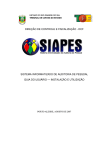
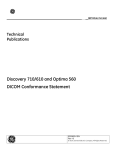
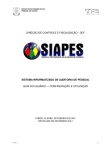
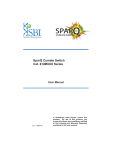
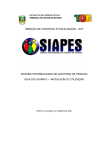
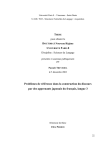
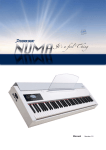
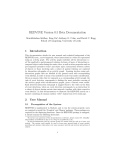

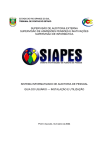
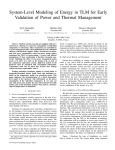
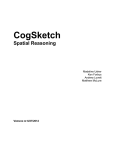



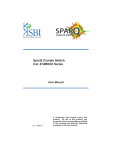
![[Insert the picture here]](http://vs1.manualzilla.com/store/data/005750886_1-61b7896b0a61bec1f004b64a994fc9d3-150x150.png)

